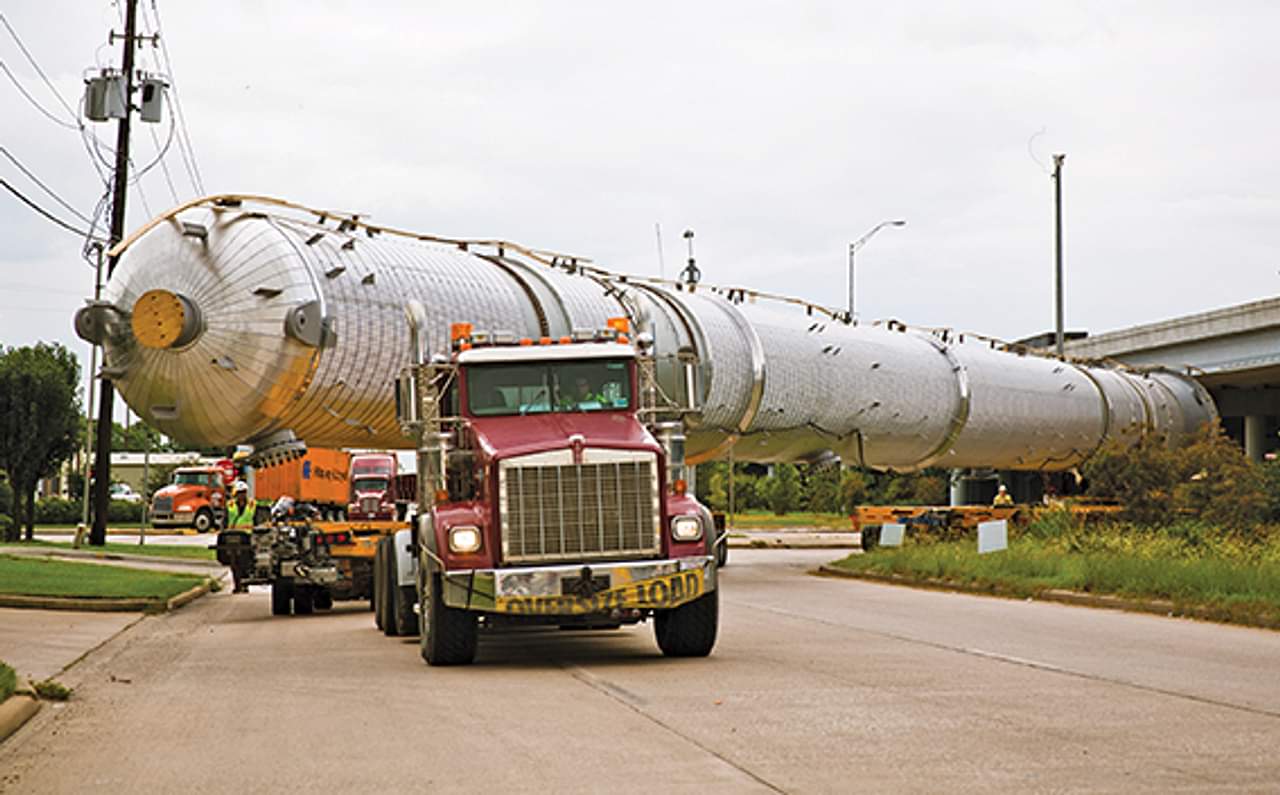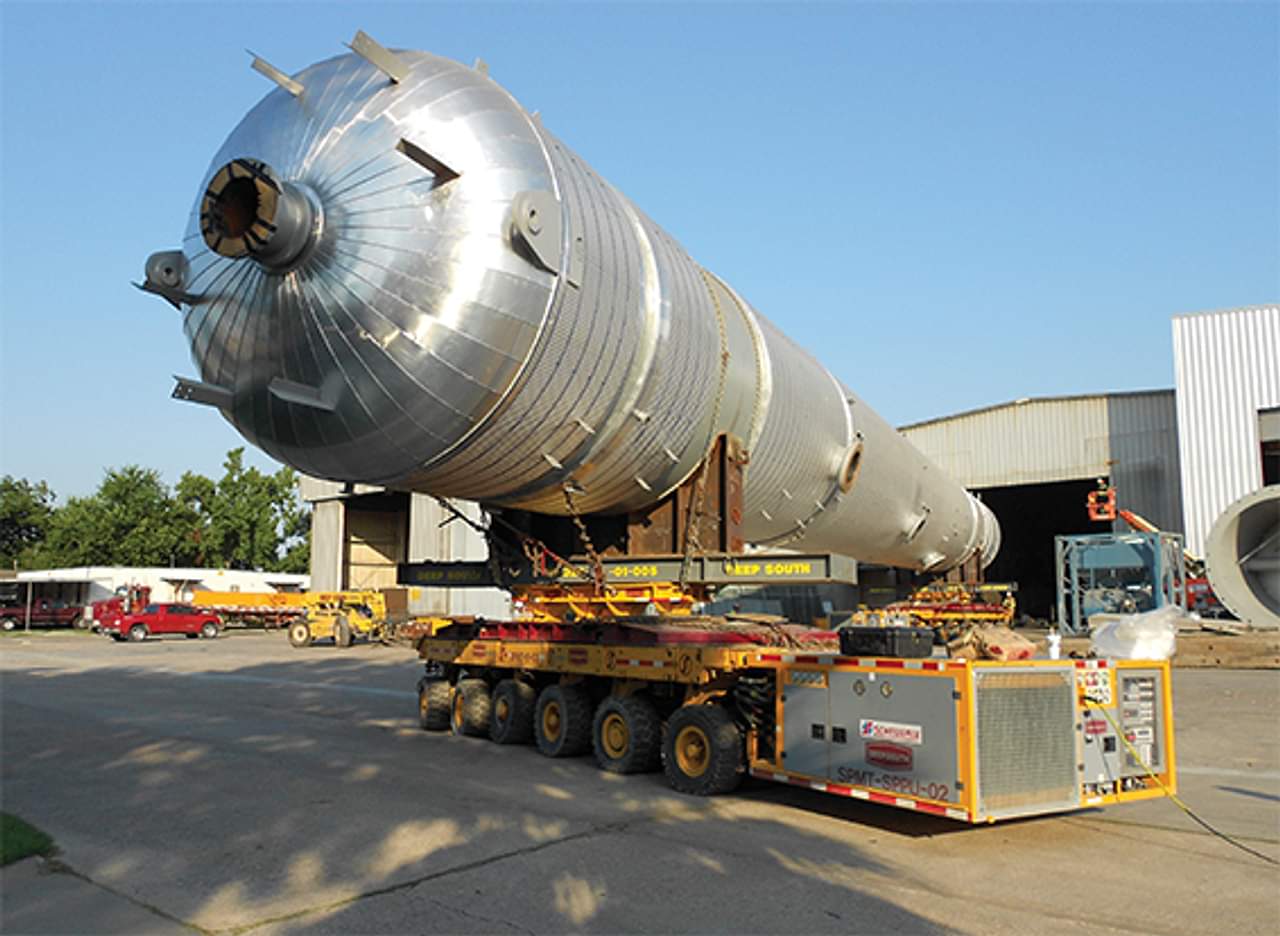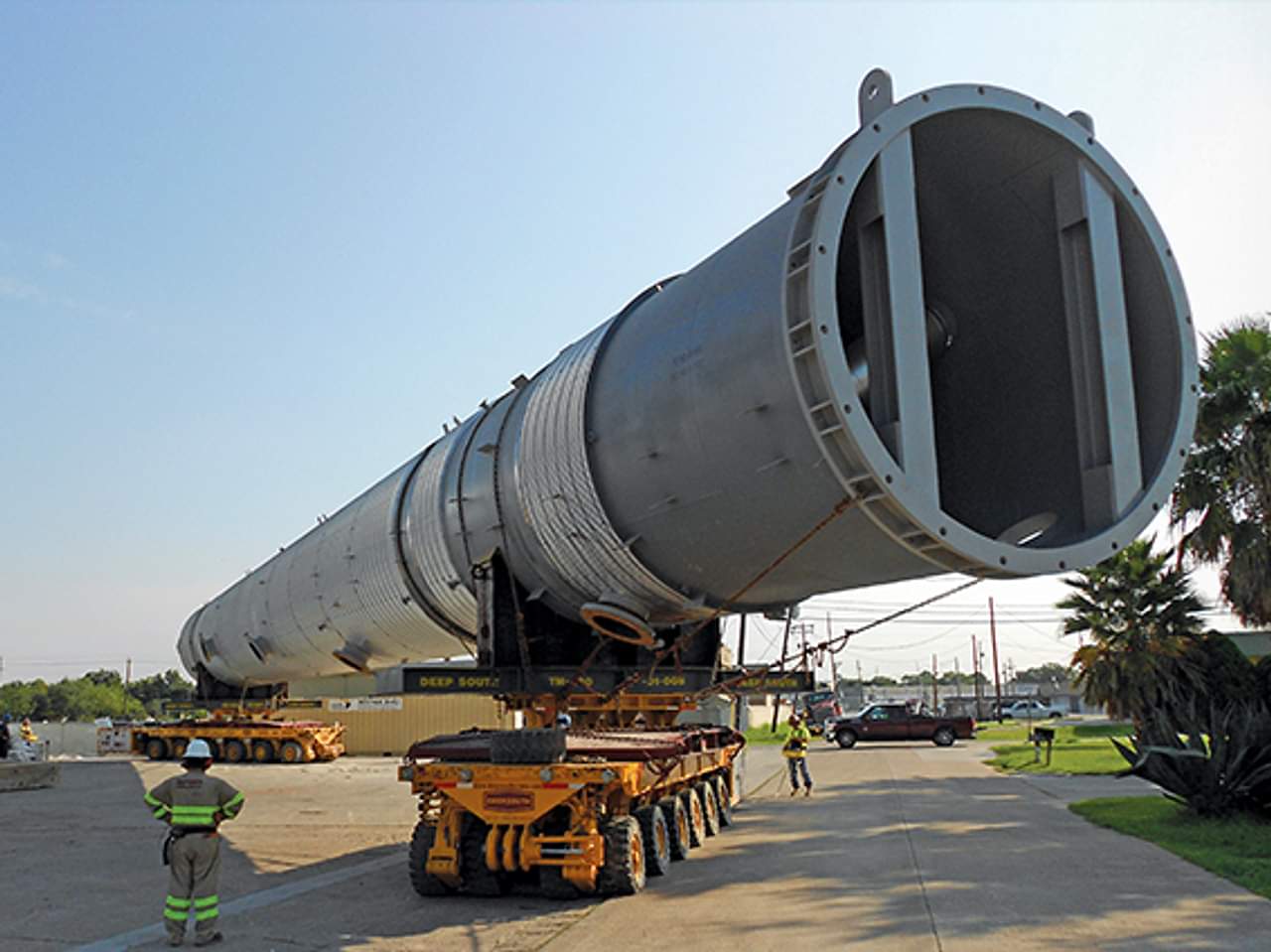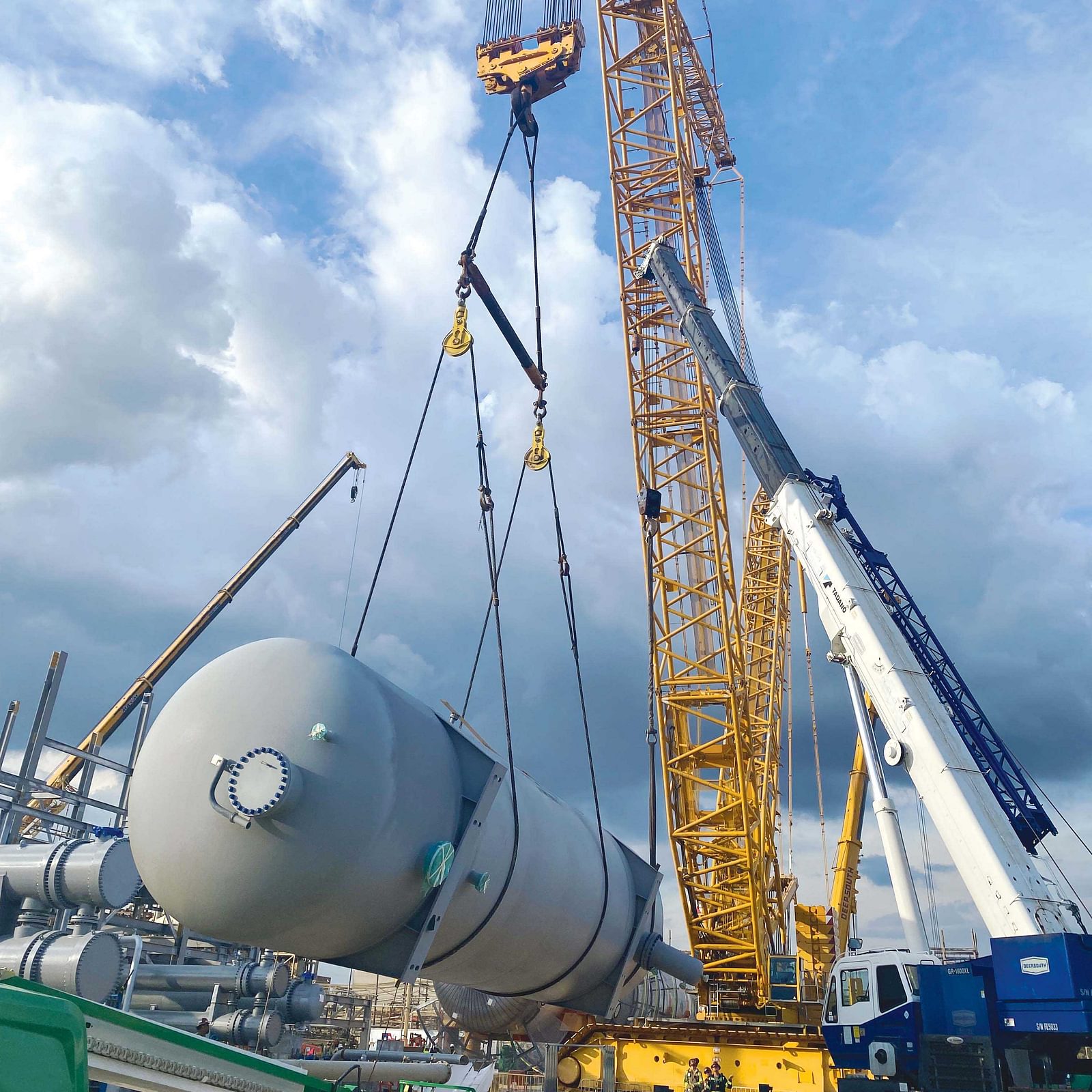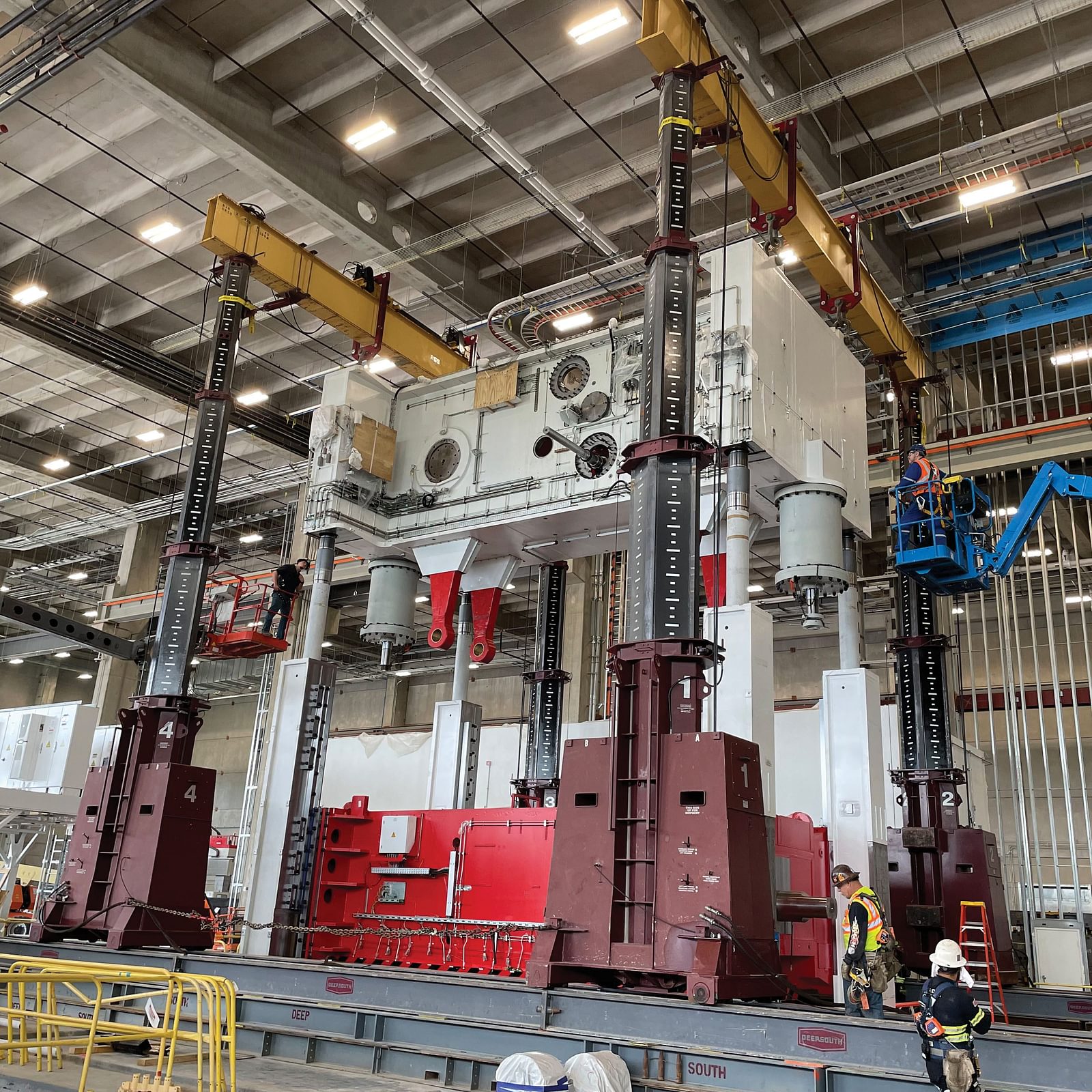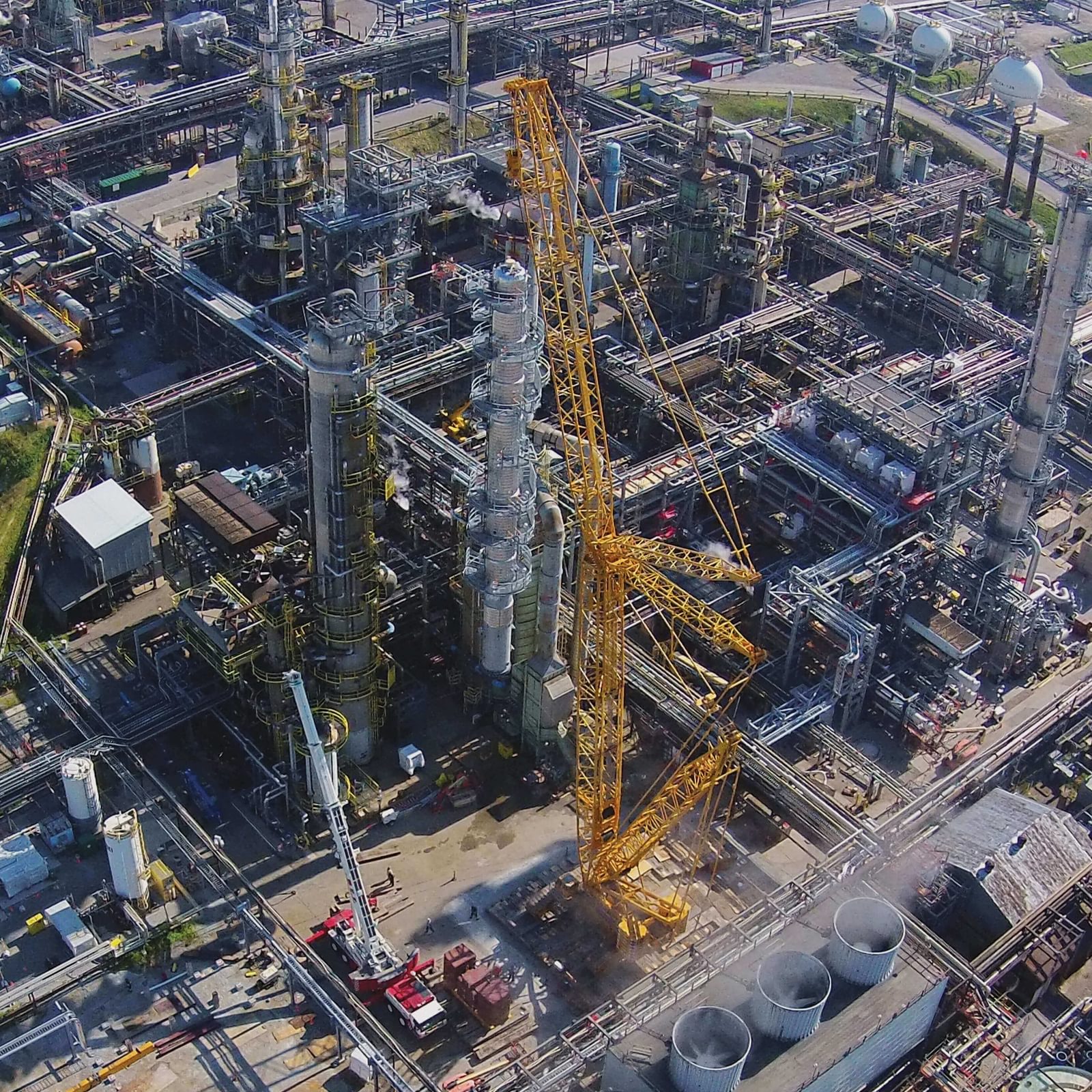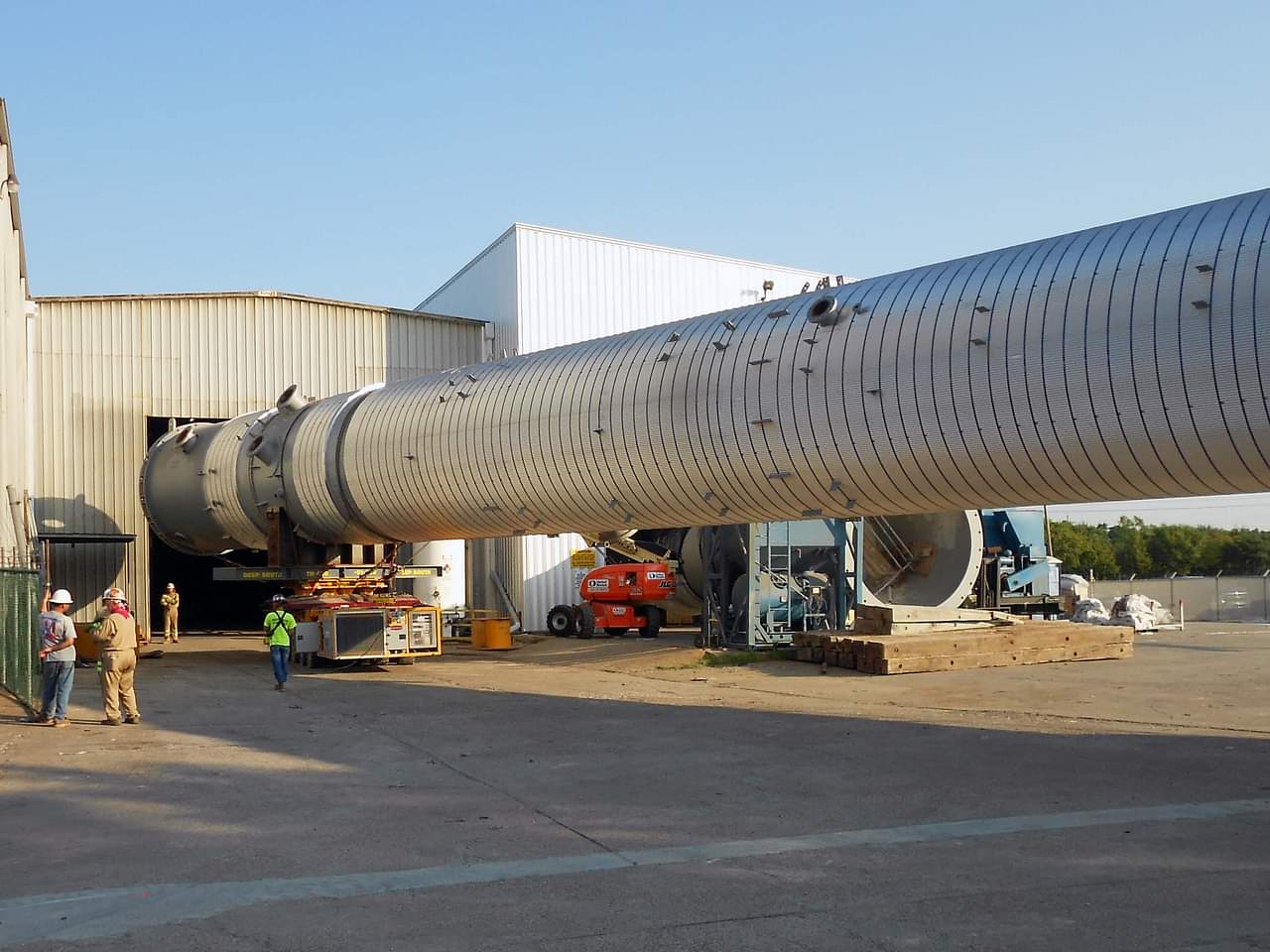
Loaded and Secured
Once the vessel was loaded and secured, Deep South’s crews set out to get it to the project site. The transport took place during daylight hours and was completed in one day. The route chosen was a bit out of the way, along the south side of Houston along the Sam Houston Beltway to State Highway 225 SE.
"Due to overhead clearance issues, the convoy had to head South on SH146 frontage road, make a U-turn underneath SH146, then head North on SH146,” said Johnson. "Shortly after we merged onto SH146, we reached the Fred Hartman Bridge. The overall span of the bridge is over two miles with a fairly steep incline.”
To overcome the steep grade of the bridge, an additional truck was used to push while the other pulled.
"Once we crossed the bridge, the route was pretty much a straight shot to the plant in Mont Belvieu,” Johnson said. "Overall transport dimensions were 238-feet, 9-inches in length, 18-feet wide, 21-feet, 4-inches high and with a combined gross weight of 732,020 pounds.”
The same route and process was required for the third pressure vessel.
"The key difference was the length,” explained Johnson. "Making the U-turn at SH146 proved difficult. The overall transport length was nearly 40 feet longer than the second vessel. It took constant vigilance throughout the duration of the turn to avoid the bridge supports and surrounding structures.”
Once the turn was executed, the rest of the hauling was smooth sailing. Overall transport dimensions were 274-feet, 4-inches long, 18-feet wide, 20-feet 10-inches high and with a gross transport weight of 781,720 pounds.
The last vessel was the largest, and Johnson said this one proved to be the most complicated of the four. The manufacturer of this vessel is located near Greens Bayou in Houston. Due to the enormous size, Deep South’s team realized that transporting it entirely over the road would be too costly.
"Since the vessel manufacturer had a dock with water access and there was a place to receive the vessel within 6 miles of the plant, we opted to barge the vessel,” Johnson said. "Once the vessel was loaded onto our trailer and secured, we rolled onto a 250-foot by 54-foot deck barge and seafastened it.
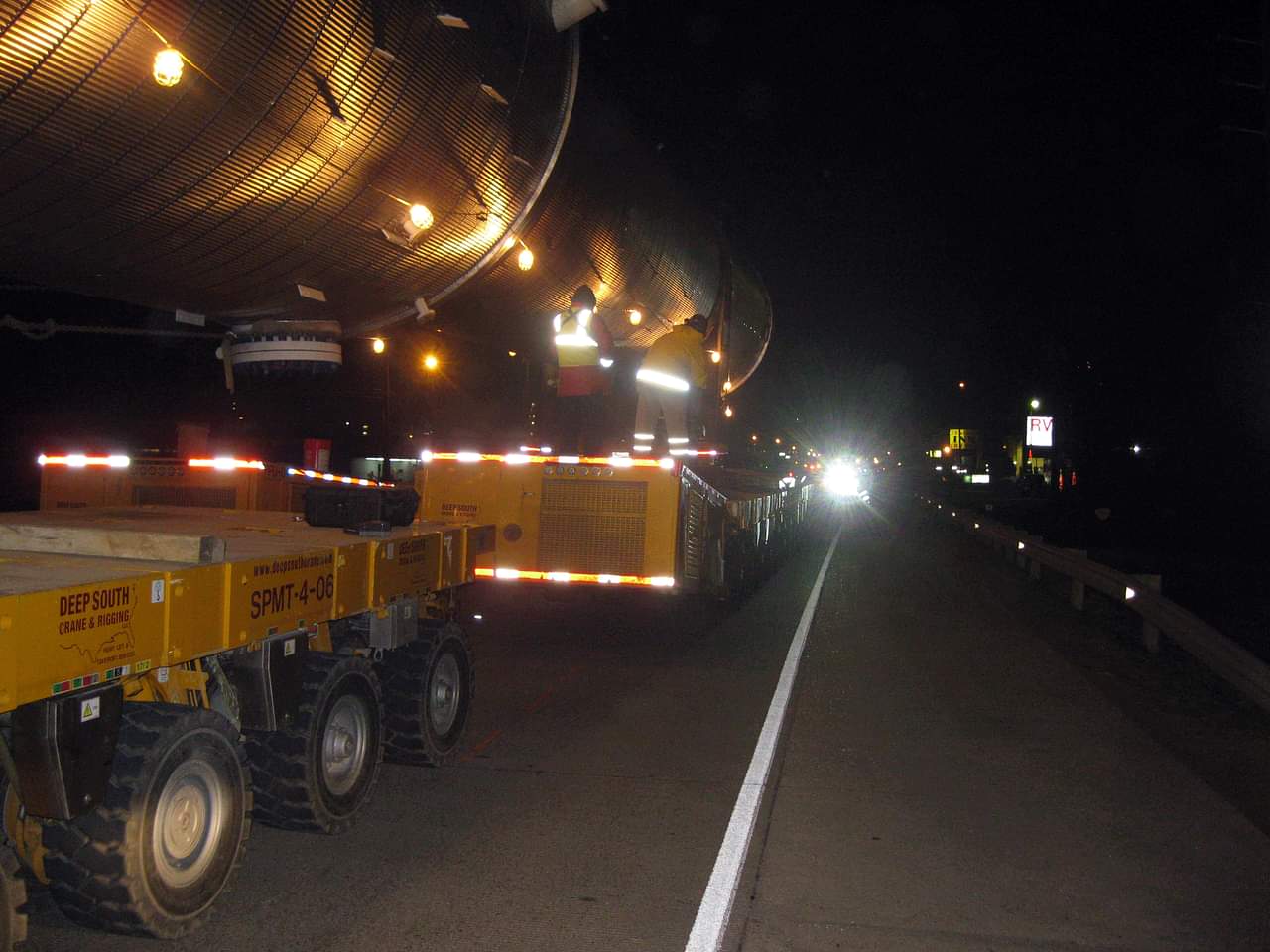
Moving by Night
It took one day for the barge to get to the roll-off site in Baytown, TX. "After its arrival, we offloaded the vessel, cleaned off the barge, and prepared for the two-night transport,” Johnson said.
With the amount of coordination required, as well as the size of this vessel, Johnson said his team thought it was prudent to move at night.
"The obstacles on the first night consisted of a railroad crossing arm that needed to be lifted, some tight turns and a median crossing on SH99,” he said.
The second night proved to be the most difficult. "To start the night, we had to cross Interstate 10,” he said. "In order to do so, the concrete barricade in the center of the road needed to be removed. This means tactically diverting traffic off of the interstate onto the feeder road to allow a crane to enter and lift the barrier out of the way. Once the barrier was removed, the convoy could cross the interstate and the barricade was put back in place. Once it was secured and the crane had been released, traffic was diverted back onto the interstate.”
The remainder of the night consisted of lifting power lines and traffic signals out of the way as the convoy slowly and carefully continued on its path to the plant.
The overall dimensions of the fourth pressure vessel was a transport length of 168-feet, 8-inches, transport width of 20-feet, 9-inches and a transport height of 26-feet, 1 inch. The transport weight was 1,493,880 pounds. Once all the vessels had been staged and dressed out, Deep South was then tasked with tailing the vessels up and setting them onto their respective foundations. The main crane for the lifting was Deep South’s 1,800-ton capacity Versacrane TC-28000. The vessels were tailed with a Terex Demag CC-2800-1, a 660-ton capacity crawler crane.
